Top 10 tourist attractions in Spain
Majestic and grand palaces, sun-drenched Mediterranean beaches, the signature signature of Flamenco dancers' heels, the silence of pilgrims entering the church in Santiago de Compostela after weeks walk El Camino. You can find the soul of Spain in tourist attractions like these, which represent the country's tumultuous history, rich culture and enchanting natural beauty. Plan your visit and find fun things to do with our list of the Top 10 Tourist Attractions in Spain.
6
San Lorenzo de El Escorial
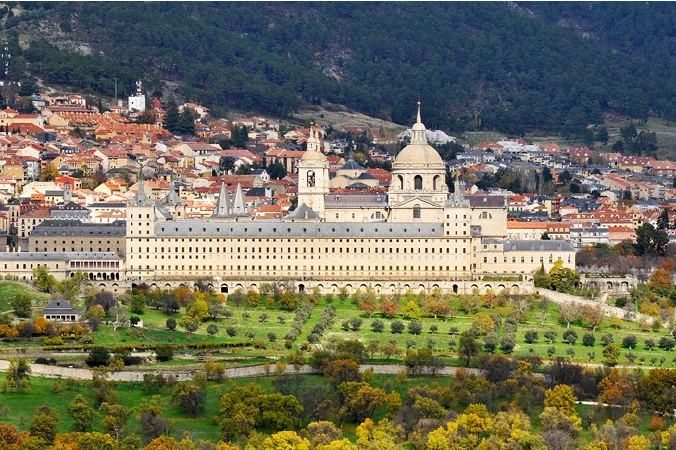
San Lorenzo de El Escorial, about 45 kilometers northwest of Madrid, was the summer home of the Spanish kings, and in 1563 work was started here on a huge complex, including including a monastery, a church, a royal palace, a mausoleum, a library and a museum, all conceived as a monument to Philip II and his reign.
The result is an astonishing collection of attractions, built around 16 courtyards, its rooms and structures connected by 16 kilometers of corridors. At its core is the church, the highlight being Herrera's 30-meter-high balustrade, made of jasper and red marble and accessed by a flight of 17 stairs.
Along with Tibaldi's vaulted ceilings and frescoes in the outer convent rooms below, the abbey's highlights are the Panteón de los Reyes (Baroque burial vaults of Spanish kings) and the library. convent , a large room also decorated with frescoes by Tibaldi .
In the palace, be sure to check out the Bourbon Suite, where Charles IV's state apartments are decorated with rare furniture and 338 tapestries. Beyond are Philip II's art-filled private apartments. The Image Gallery below has a large collection of beautiful paintings, including works by Hieronymus Bosch, Albrecht Dürer, Titian, Tintoretto, Veronese, Velázquez and El Greco.
7
Church of Seville and Alcazar
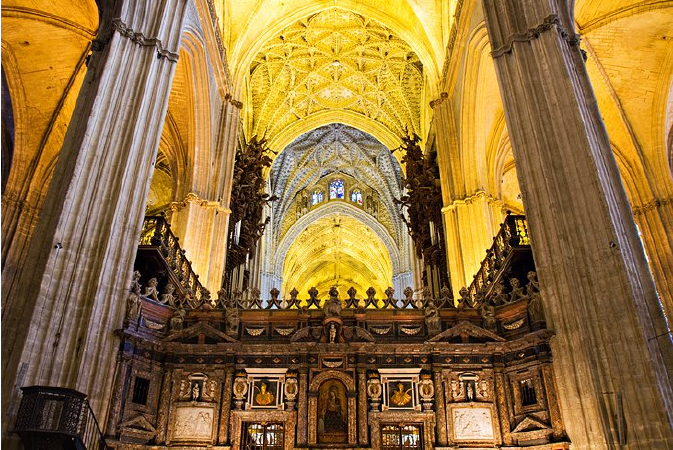
La Giralda Tower, Seville Cathedral and Alcazar combine to form a UNESCO World Heritage Site. The tower is a sub-tower, a "masterpiece of Almohad architecture," according to UNESCO. The church has a larger interior space than St. Peter's Basilica in Rome, and the main altar is 37 meters high of statues carved entirely in gold.
Christopher Columbus' monumental tomb is supported by a quartet of larger-than-life figures. La Giralda, the symbol of Seville, began life as a minaret and is all that remains of the city's Grand Mosque, demolished for the construction of the cathedral.
Alcazar opposition was begun by the Moors in 712 and continued after the Christian reconquest by King Pedro in the 1300s in the ornate neo-Moorish style known as the Mudejar. The rooms and salons are stunningly beautiful, and the gardens are a joy to stroll, lined with fragrant orange and lemon trees. Adjacent to the east is Santa Cruz, the former Juderia (Jewish Quarter), a neighborhood of whitewashed houses, iron balconies, and flower-filled courtyards.
8
Guggenheim Museum, Bilbao
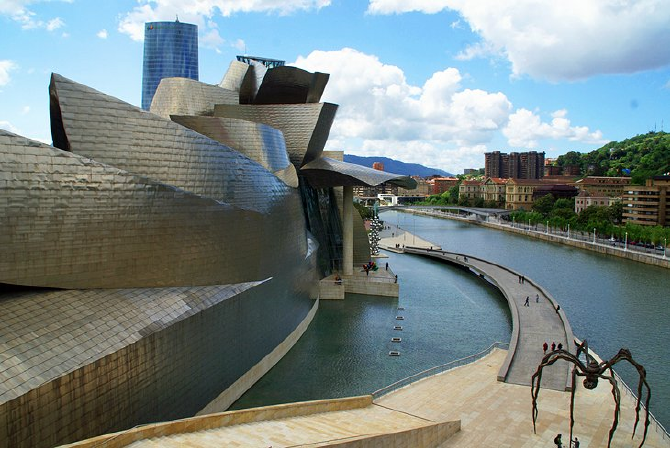
You really have to see this building to believe it - no photo has captured the unique beauty of the Guggenheim Museum, Bilbao, so vividly that they seem ready to take off. American architect Frank Gehry used limestone blocks and undulating titanium plates to popularize the concept of modern architecture.
He was so radically successful that two new terms emerged from it: the "Bilbao effect" - the ability of a city to turn its destiny around by building a world-class building - and "architectural tourism", the entire tourism industry segment revolves around landmarks of contemporary architecture. Inside the museum are traveling exhibitions and rotating displays of its own modern art collections.
9
Church of Santiago de Compostela
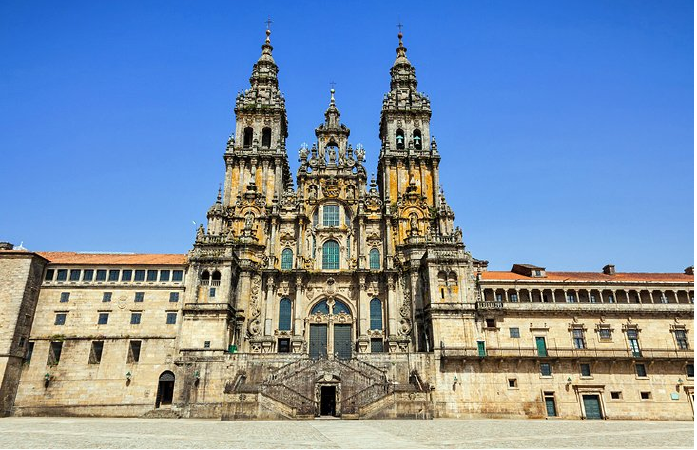
The magnificent Church of Santiago (St. James) was built to house and honor the saint's relics, and it has been the target of pilgrims since the Middle Ages, their culmination being complete perfection. the famous Camino de Santiago.
One of the outstanding monuments of Early Romanesque architecture, the church was built between 1060 and 1211, and despite the exterior Baroque transformation of the 16th-18th centuries, the interior interior still in the purest primitive Romanesque style.
You'll see both of these phases unfold as you enter the western front, past one of Spain's most impressive church facades. Step inside to face the Pórtico de la Gloria, part of the old west facade now concealed by an 18th-century facade. This three-pointed doorway is one of the largest and most magnificent collections. of Romanesque sculpture in the world.
On either side, narrow stairs lead up behind the statue so pilgrims can kiss the Apostle's cloak - culminating in their pilgrimage. In a crypt under the altar, the Apostle's remains were placed in a silver coffin.
The focal point of the interior is the ornate Capilla Mayor, built above the Apostle's tomb. In the center of the high altar of jasper, alabaster and silver is a 13th-century wooden statue of Than Tong, richly decorated with precious metals and precious stones.
10
Plaza Mayor, Madrid
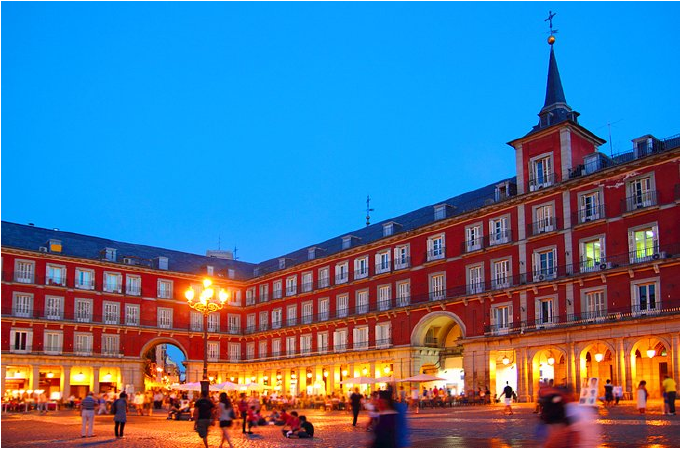
Nhịp tim đập rộn ràng của thành phố thủ đô sôi động của Tây Ban Nha, Plaza Mayor đã đóng một phần quan trọng trong cuộc sống Madrid kể từ thế kỷ 16, khi Philip II giao nhiệm vụ thiết kế nó cho kiến trúc sư yêu thích của ông Juan de Herrera, người xây dựng Escorial.
Nó đã từng là sân khấu cho các sự kiện nghi lễ - tuyên bố của một vị vua mới, phong thánh, thiêu rụi những kẻ dị giáo - và giải trí công cộng như các giải đấu hiệp sĩ và đấu bò tót. Các quán cà phê vươn ra vỉa hè lát đá dành riêng cho người đi bộ và các nhà hàng rợp bóng mát dưới những mái vòm là phòng khách của Madrid, những địa điểm gặp gỡ nổi tiếng của Madrileños cũng như khách du lịch.
Suitable for you
02-07-2023 cookie
02-07-2023 cookie
01-07-2023 cookie
01-07-2023 cookie
01-07-2023 cookie
